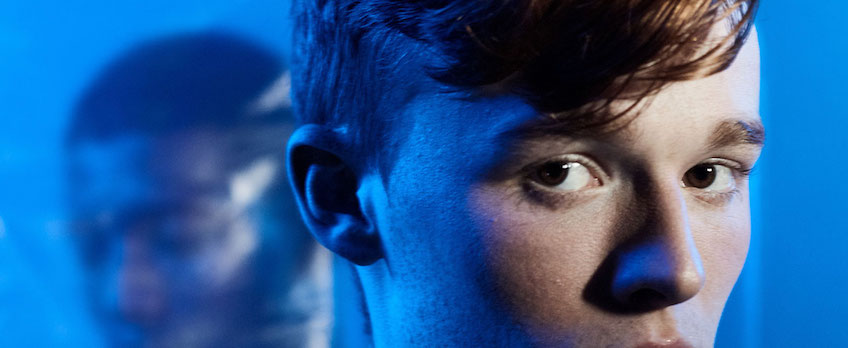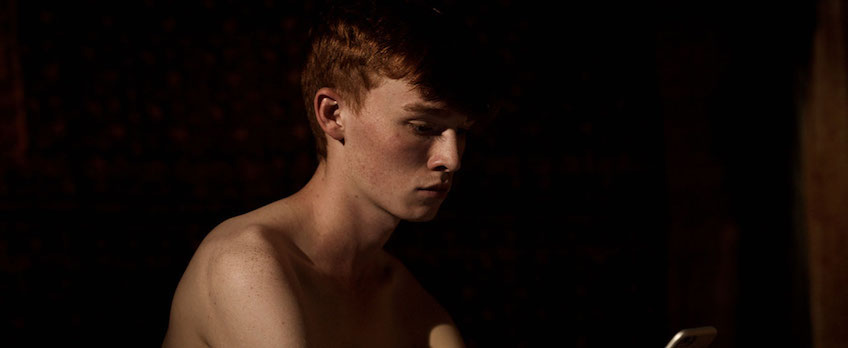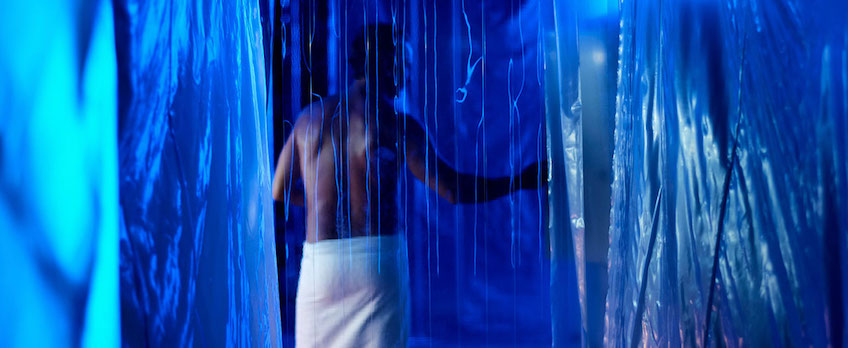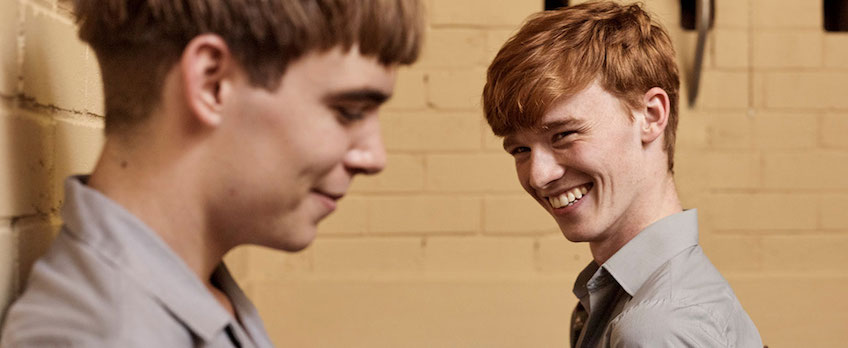Interested in writing for our blog? Send your pitches to editor@miff.com.au.
“The Blue Room is Limitless”: In Conversation with Samuel Van Grinsven, Director of Sequin in a Blue Room

Sequin in a Blue Room tells the story of Sequin, a 16-year-old high-school student exploring his burgeoning sexuality through the anonymous, increasingly accessible world of online hook-ups. In the process of this exploration, he discovers a mystifying space known as ‘The Blue Room’. Drenched in piercing blue light and maze-like in its geography, the room plays like a cinematic purgatory born from gay male lust. In conversation with New Queer Cinema of the 90s (from the likes of Gregg Araki and Gus Van Sant), Sequin is the debut film from Samuel Van Grinsven, a fresh and bold new voice in Australia cinema. I spoke to Samuel about his new film, discussing its place in the queer landscape of 2019.

From Sequin in a Blue Room
I’m curious when, or how the image of the blue room came to you?
It was the first thing. Before there was narrative, before there were characters, there was the blue room. It was the absolute first spark. It was just a picture that I have no idea how it ended up in my head, still to this day. Some people ask me and I’m like I really don’t know where the story came from. But, I just had this image.
You know, I didn’t grow up in Sydney, and now I live quite close to the city, so when I walk in the city I still find it so beautiful in that sense of looking up at all the different apartments… The intimacy of living so close to each other but also being completely private. And I had this image in my head of a glowing blue room. And at the time I was doing my masters focusing on New Queer Cinema, but also studying a lot of queer theory and a lot of queer history. So eventually the blue room turned into something that was somewhere between a private sex party which you would see in the drug scene of London, but mixed with something that is very much a part of our history, like gay saunas. And the blue room is in between the two. It is connected to history but still feels very modern.
And I felt like, also coming from a small, country town and having moved to a big city, that the scene when Sequin enters that blue room for the first time… to me it almost feels like your first time visiting a gay club.
Yes!
You look around you and you’re like, this is all real, it can happen.
Even being technical and nerdy, it’s the first scene up to that point where you have a floating camera, so it’s not locked off. And it’s the first scene with Steadicam, so you’re moving with the characters more freely. It’s this sense of… dreaminess, of freedom, of being able to move freely through a space for the first time in the film. And all of that’s built into that feeling that you felt, which is great.
I wanted that for Sequin, I wanted him to be someone who does push the boundaries, who’s looking for these experiences that are constantly new to him. That’s why he blocks people, that’s why he’s hanging out with different men each time, going to different apartments – he’s interested in that, in embracing the unknown, and the blue room is limitless. It’s endless. You can never really see where the exit is, you can never really see the end of the hallways, it’s a maze.

From Sequin in a Blue Room
I really loved, although it’s not specifically Grindr, how much this Grindr-like app played a part in your narrative. I’m interested in what you thought was important when visualising this very online, very queer space?
It’s one of those things where, when I knew I wanted to tell a coming of age thriller film, it didn’t make sense to me that there’d be these, you know, lengthy dialogue scenes, or that Sequin would be meeting people in a café, or at a club. That’s just not reality. And Grindr, and these apps, were such a huge part of my coming of age. They were really crucial.
And it’s so easy to talk negatively about them, but I would not have felt as comfortable, and I wouldn’t have known that these feelings I was feeling were normal, if it weren’t for apps and social media like this that do make it accessible. And yes, there’s the dark side that comes with that which we see in Sequin, but in terms of the way that we show it on screen, we wanted it to feel familiar. So obviously there’s that familiar connection to Grindr, but we wanted it to also live in the genre world. So it’s a bit more thriller, the way it moves, the colours, the rules of the app are more heightened than they are in real life.

From Sequin in a Blue Room
I’m also curious what you were thinking about in setting Sequin at a time when this lead character is 16. Do you think there’s something valuable to explore in that early stage of discovery when one is queer?
I think being queer, and coming of age, we grow up faster than the people around us. And that’s why we see so many sexual awakening stories in queer cinema set around that age of 16.
I understand the backlash to Call Me By Your Name (MIFF 2017) [note: there was some controversy regarding the age difference between the film’s two lead characters, one being 17, the other 24], absolutely. But I don’t know if that backlash is being completely honest with our community. The amount of people who were speaking to Jory, my co-writer, and I while we were writing this… They were talking about these experiences they had with older men when they were 16 – some people when they were younger than 16 – as their first sexual awakening. And I think it’s all to do with the fact that, often when you’re growing up faster than the people around you, you have to turn to an older generation. And these apps [like Grindr] facilitate that, and that’s what Sequin is really about, it’s these two different generations, multiple different generations of the queer experience colliding within a single app.